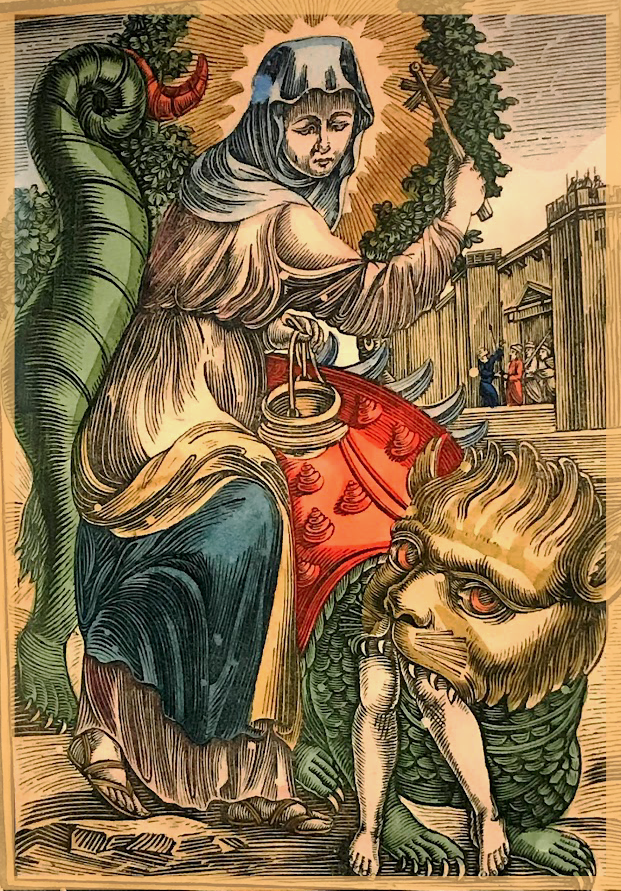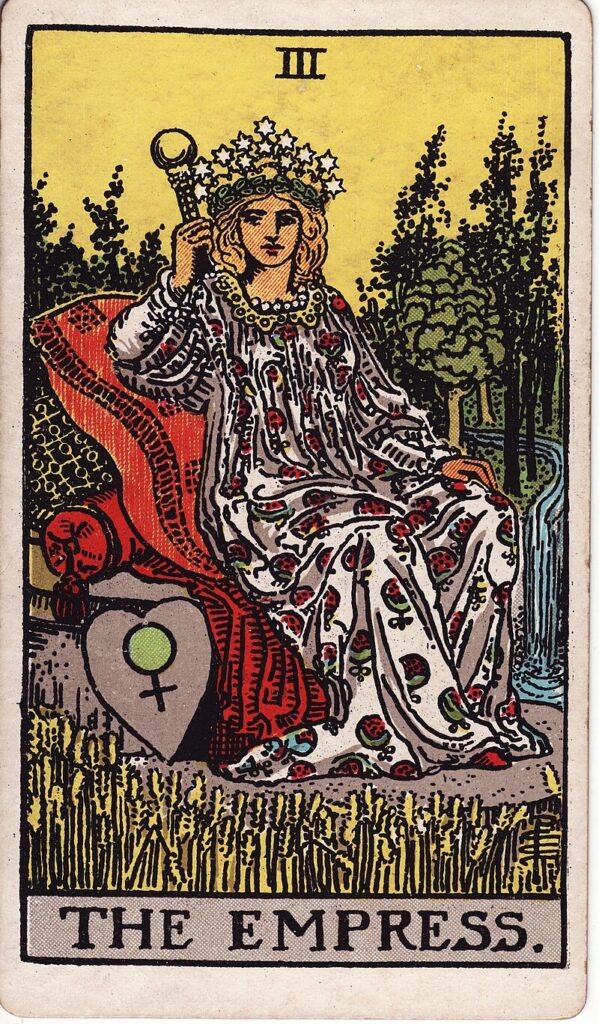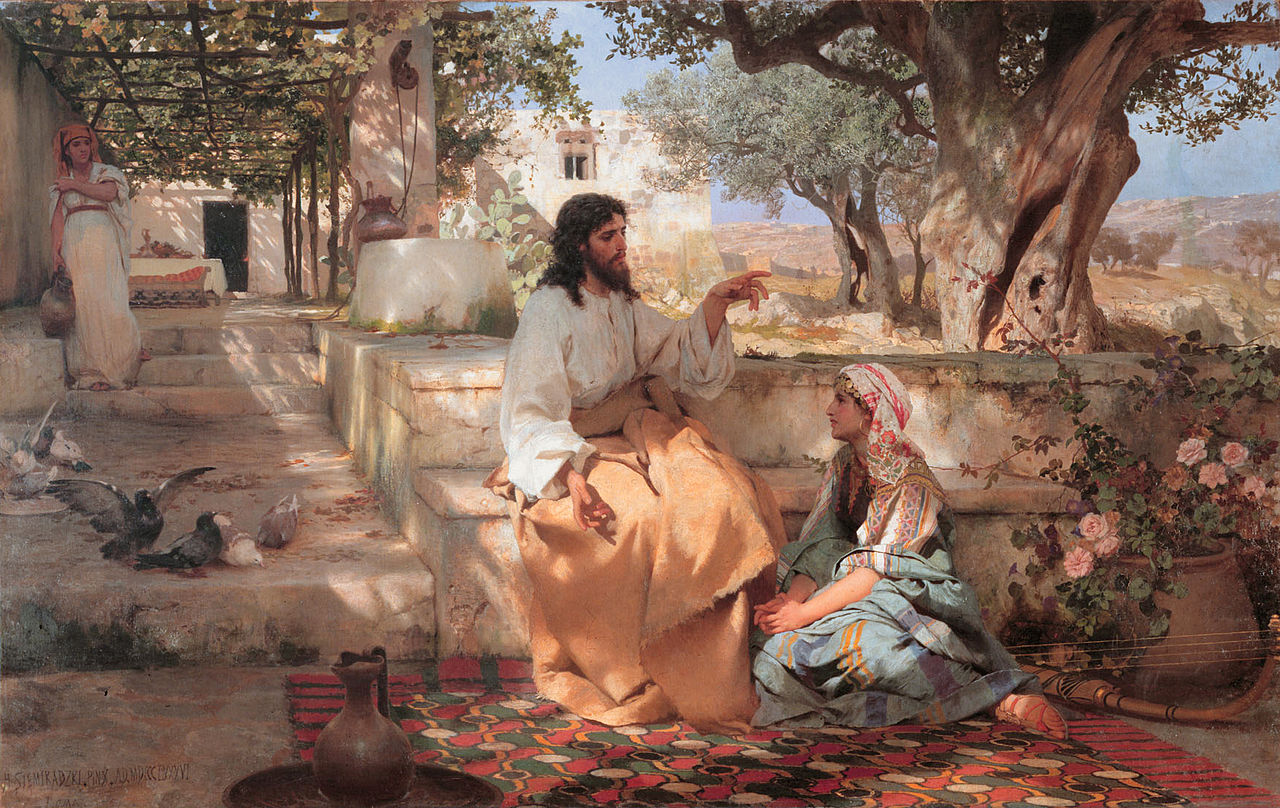Each grain that settles on an altar, every crust of wax forgotten at the base of a candlestick, speaks in a tongue older than written prayer. There are quarters that remember hands, spaces that crave the cadence of ritual touch, the circulation of water, the faint spirals of incense at dawn. In Provence, Martha confronts the Tarasque. The narrative winds through centuries: a woman approaches the beast with no weapons other than linen, water, and the sign of a cross. The monster bows, subdued not by force, but by the pattern of attentive presence. Tradition folds Martha into the margins of the Sacred: she is the silent queen whose reign is household labour, whose altar is the table, whose sceptre is the broom. Within this, a veiled Divine finds its passage. The work of cleansing and repair does not mirror defeat. Instead, each act becomes a subtle victory. The soiled altar becomes a theatre for reclamation, a scene where the mundane crosses the boundary into Holiness, and where the wound is sealed by ritual care.
I. The Veiled Imperatrix: Martha in the Shadow of the Altar
Hidden in the folds of liturgical tradition, Martha presides from below, her sovereignty felt in the daily repetition of tasks. She holds the point where dust becomes doctrine, and the routine of the kitchen echoes the solemnity of the choir. Her story is inscribed in the Golden Legend, where she defeats the Tarasque through constancy and care rather than spectacle. Each act of cleaning forms a boundary against chaos, an unspoken geometry of protection. The cloth laid over the loaf becomes veil and offering. The bowl of water set at the door marks a liminal space through which corruption hesitates to cross. In Martha, the feminine principle reclaims its thrones in the realm of necessity. There is only the slow choreography of hands moving through still air, sealing the day’s labours with intention. The house becomes a cloister, each corner a cell. In this space, receptive power is active; the silence of the queen shelters the passage of the Divine. The stained altar, tended with patience, becomes the wound that births fragrance, the threshold where the world is remade through dust and breath.

II. The Empress and the Protection of Form
The Empress in Tarot is seated beneath the canopy of stars, grain at her feet, and the curve of a river marking her dominion. Her aspect is fertile, maternal, but her true power rests in the defence of form. She gathers, she shields, she restores. Every receptive gesture carries a latent edge; the lap that welcomes is also the lap that guards. In the rites of the domestic, this arcanum moves in shadow. The cup that receives must first be emptied and washed; the hearth that gathers must be swept. The Empress does not merely embody abundance; she is the apparatus within which desecration is reversed. When profanation creeps through the lintel, when the dragon coils through the cracks in memory, the Empress rises in the guise of Martha. The defence of the Sacred and the Spirit is never loud. It unfolds in the circularity of tasks, the metronome of water, the choreography of cleansing. A space cared for acquires density, a silent resistance that repels what seeks to feed on entropy. Even as the beast sniffs the air at the door, it meets the geometry of order, the aura of a presence that has no need for armour. Beauty sustained in the face of decay is a sign that the Divine remains vigilant.
The Empress is thus not a secondary figure, but the silent architect of return. Many would be tempted to see in Martha the lineaments of Strength, mistress of the beast, hand upon the muzzle, taming through will and presence. Yet the drama unfolds elsewhere. What overcomes the monster is seldom muscle or command; the field is subdued by rhythm, the creature daunted by the measured grace of order. It is not the clenched fist that repairs the altar, but the open hand, patient, repetitive, arranging the world until the wildness bows. The Empress prevails through subtleties: a table cleared, a cloth laid, a silence that outlasts uproar. In her, power is gathered until even the beast finds rest.

III. Ritual Labour: Cleansing as Exorcism
When the altar is soiled, the first gesture is preparation, not lament. Water is drawn before the sun is high. Salt is pressed between the fingers, a small invocation of origins. The broom sweeps in spiral, each motion echoing ancient rites that knew how filth attracts the unquiet. Martha’s legend speaks through these acts: repetition conjures a shield, labour breeds the slow, inexorable silence that expels what howls for entrance. There is no need to shout at the shadows. Each vessel polished, each cloth wrung, each incense trail spun through the air claims the ground anew. The monster that once raged at the city’s edge finds itself banished by the refusal to leave anything neglected. This is not the exorcism of spectacle; it is the reversal wrought by discipline. The laceration is sealed with water, the doorway protected with intention. Even as memory of decay persists, its force is spent. The altar, now renewed, shines with a quiet defiance. Protection rests not in might, but in the resolve to restore what was abandoned.
Coda: Ritual of Water and Smoke
At first light, fill a bowl with clear water. Add three grains of sea salt and a petal of rose, torn gently. Light incense, either frankincense or myrrh, allowing the smoke to weave around the vessel. Pass a linen cloth through the vapour, then dip it in the water. Trace a spiral from the centre of the altar to its edge, moving with care. Touch the threshold and the windowsills. Whisper: “May Martha defend this space. May the Empress shield its form. May the Divine return.” Carry the bowl outside. Pour the water at the root of a living plant. Let the incense burn to its end. Silence lingers, dense and grateful. The house remembers the hand that tended it. The altar breathes, now restored.
Fiat Lux.
